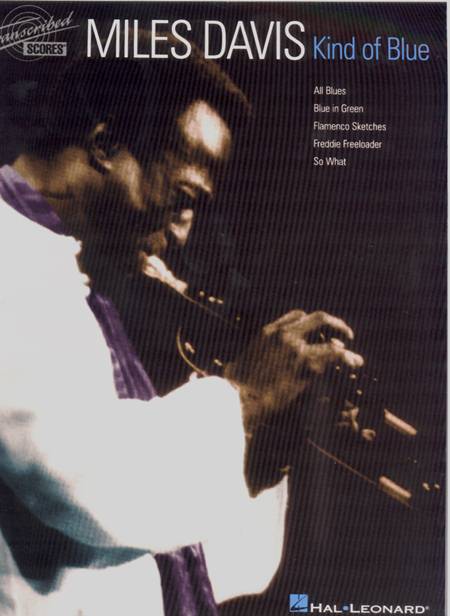

Background Notes
One of the most influential albums in the history of jazz, Miles Davis' Kind of Blue was first released on August 17,1959 and marked a major turning point for the music. With no rehearsal and the compositions basically sketches by Miles, the musicians created one of the landmarks in the new jazz of the '60s. The music has been called haunting, lyrical and hypnotic. Many musicians have credited the album with making them want to play jazz. Sales continue to astound the recording industry; reportedly, Kind of Blue sells about 125,000 copies a year worldwide.
Miles Davis was on a career high in 1959. After years of personal problems and low-profile gigs, Davis was now getting major
attention. His small group and large ensemble albums (with arrangements by Gil Evans) were getting raves in the press. The members of the band on Kind of Blue were all-stars and leaders in their own right. Each had his own sound and approach, and yet this was definitely a cohesive band.
Kind of Blue represents some of the earliest examples of modal jazz, the tunes based more on scales than chords. The idea was to allow the players free reign to go in any number of melodic directions. In interviews, Miles stated how he felt modern jazz was becoming too harmony-oriented, and he looked to his music to open up more possibilities in melodic terms. He was a true visionary; modal jazz became more and more important as the sixties progressed.
Most of the compositions have become standards, and have even been used as teaching material. All of these elements add up to a classic album, and now a classic music book.
About this Folio
The music was transcribed by Rob DuBoff, Mark Vinci, Mark Davis and Josh Davis. It is presented in transposed sketch score format. All ensemble lines and improvised solos are included. Rhythm section parts are often included as guides to give the "feel" of each composition. In addition to sections marked by letter, the number of each chorus is included. All of these decisions were made to address a number of uses.
1) For playing and performance by a sextet in the instrumentation matching the original.
2) For individual and class study.
![]()
![]()
